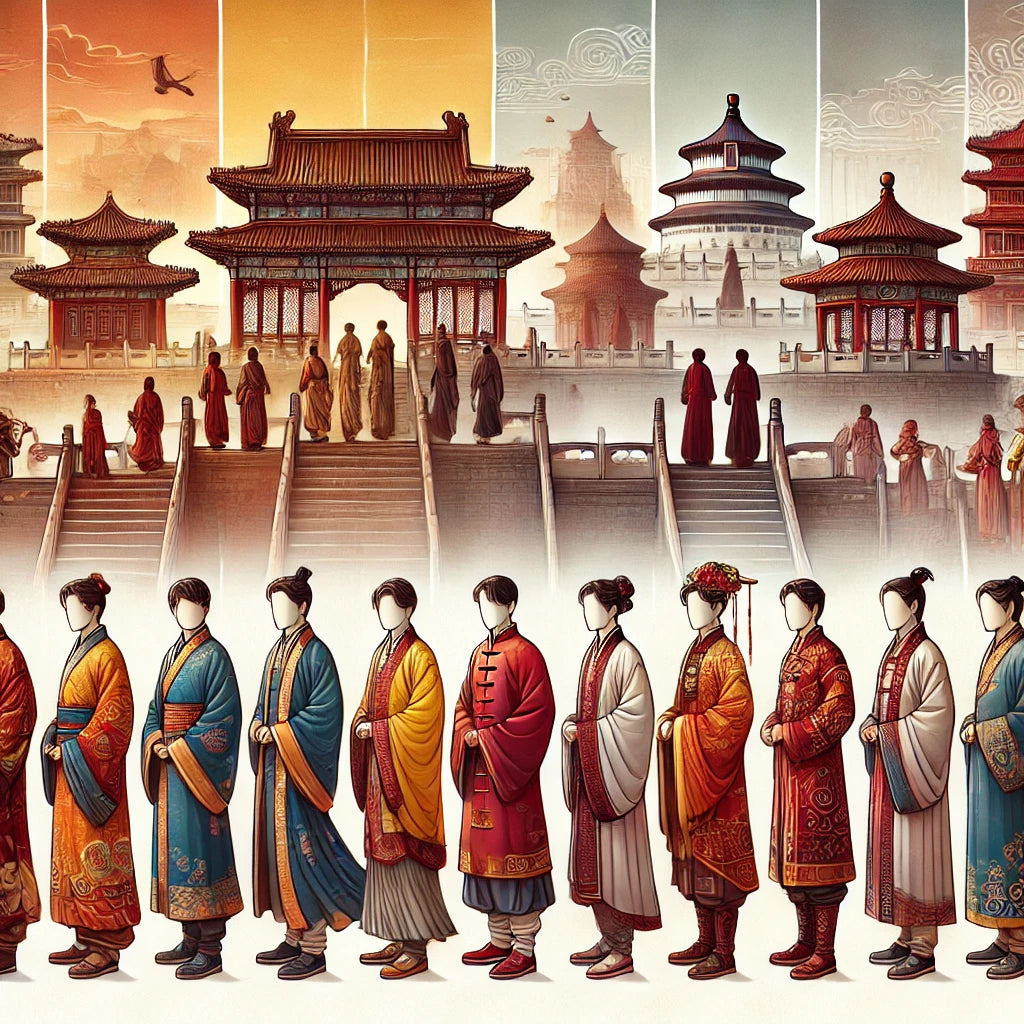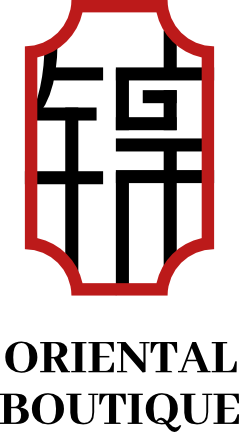The Evolution of Traditional Chinese Clothing

Han Dynasty: Hanfu as the Foundation
The Hanfu, often regarded as the origin of traditional Chinese clothing, dates back over 3,000 years. Its defining features include wide sleeves, loose fits, and a flowing design, embodying the ancient Chinese philosophy of harmony between humanity and nature. Hanfu was more than just apparel; it was a cultural vessel that symbolized etiquette, morality, and traditional values.
Tang Dynasty: A Blend of Openness and Grandeur
The Tang Dynasty brought about a flourishing era of cultural exchange, partly fueled by the Silk Road. Tang fashion preserved the inclusivity of earlier styles while embracing bold innovation. The incorporation of “Hu” (non-Han) elements introduced vibrant colors and airy silhouettes, creating a distinctive blend of Han and foreign influences.
Song Dynasty: Simplicity and Comfort
By the Song Dynasty, clothing began prioritizing simplicity and practicality. The designs focused on comfort and tailored silhouettes, embodying a refined aesthetic. This era's clothing emphasized balanced colors and meticulous fabric combinations, characteristics that resonate strongly with modern “new-Chinese” styles.
Ming Dynasty: Cultural Confidence in Full Bloom
Following the establishment of the Ming Dynasty, reforms in clothing sought to emphasize cultural confidence by distancing themselves from the foreign styles of previous periods. Ming attire reintroduced the structured "upper garment and lower skirt" format, adhering to strict ceremonial protocols. Iconic garments like the mamianqun (horse-face skirt) became daily essentials for women.
Qing Dynasty: Fusion of Han and Manchu Elements
The Qing Dynasty’s attire represented a complex fusion of Han and Manchu elements. Key Manchu garments such as the qipao (cheongsam) and sleeveless jackets stood out, although they differed significantly from the modern qipao style often seen today. Meanwhile, Han clothing retained elements like wide sleeves, coarse fabrics, and intricate embroidery.
Legacy and Modern Revival
From the flowing elegance of Hanfu to the bold openness of Tang attire, the practicality of Song styles, and the ceremonial grandeur of Ming garments, traditional Chinese clothing narrates a rich story of cultural evolution. Today, as new-Chinese styles rise in popularity, these historical elements find new life, seamlessly blending tradition with contemporary aesthetics.
Through this exploration of traditional clothing, we not only appreciate the beauty of historical garments but also connect with the profound cultural values they embody. Whether it’s for fashion or heritage, these styles continue to inspire and captivate across generations.
